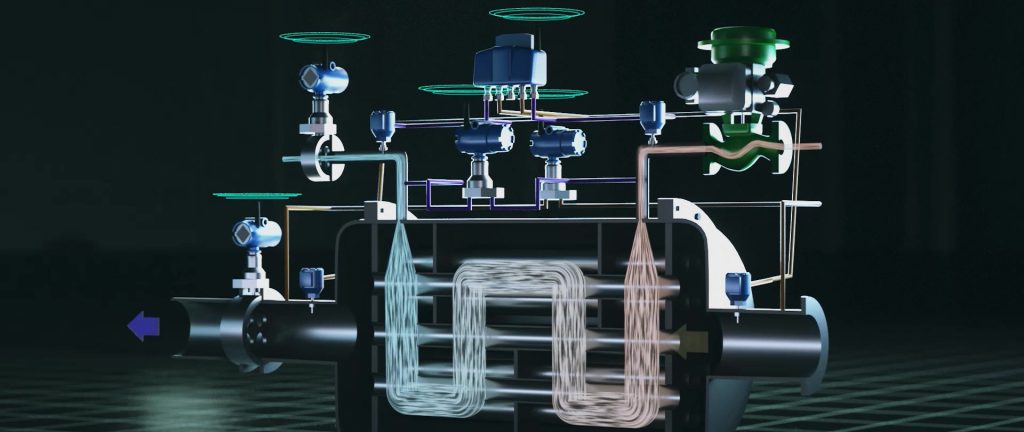Deep within a Chevron fuel refinery, one key machine is now talking – and revealing secrets about its own health.
That chatty piece of equipment, called a heat exchanger, removes the heat from fluids flowing through it as part of the plant’s fuel processing.
In a pilot program, Chevron affixed some exchangers with wireless, Industrial Internet of Things (IIoT) sensors that collect and send real-time data from the heat exchanger to the cloud – supplementing information already gathered by the safety and control system.
Data scientists then analyze that fresh data to check the equipment’s health status now, and to predict its condition in the future.

“Understanding the health of these exchangers can prevent unscheduled outages as well as optimize when we clean these units,” says Deon Rae, a Chevron fellow and lead of Chevron’s IIoT Center of Excellence. “That has the potential to save the company millions of dollars a year when scaled across our whole inventory of heat exchangers.”
Chevron employees needed less than one day to connect the sensors to the data historian (a type of data repository) in Microsoft Azure, launch the analytics and start gleaning insights, Rae says.
The company plans to expand that same IoT technology to other pieces of equipment at facilities around the world to similarly monitor their health and forecast their performance, Rae says. Chevron has more than 5,000 heat exchangers in active operations in more than 100 countries. Deploying health monitoring across different pieces of equipment has the potential to provide significant savings.
Chevron also is piloting the use of sensors to measure pipe corrosion and tank levels used at their facilities. With IoT and the cloud, employees also can track temperature, pressure, vibrations and other types of measurements.
“Connecting devices to the cloud helps customers make informed decisions quickly,” says Sam George, director of Azure IoT at Microsoft. “We’re seeing broad awareness across the industry of the profound effects that IoT can have on a business.”




